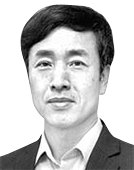[Column] A fatal exodus for Korea
이 글자크기로 변경됩니다.
(예시) 가장 빠른 뉴스가 있고 다양한 정보, 쌍방향 소통이 숨쉬는 다음뉴스를 만나보세요. 다음뉴스는 국내외 주요이슈와 실시간 속보, 문화생활 및 다양한 분야의 뉴스를 입체적으로 전달하고 있습니다.

Jeong Jae-hongThe author is an international, diplomatic and security news editor for the JoongAng Ilbo. In a recent meeting, I met a man who had sent his teenage son to the United States alone to study. He sighed over the burden of sending more than $46,000 a year to support him but nevertheless was proud he was doing well at an American school. He wished his son would graduate from a U.S. university, find a job, and settle there. Another man whose son was still in elementary school also hoped his son could work in America, as he projected job situation in Korea will get worse after a decade. “Korea has no future,” he cynically said.
Their pessimism about the country’s future is well-grounded. Korea’s fertility rate last year was 0.78, the lowest in the world. The trend will likely get worse as more and more do not see the need to get married and have kids. Aging is also the fastest. The share of people aged 65 or older that took up 17.5 percent of the South Korean population is expected to reach the world’s highest of 39.4 percent by 2050. Goldman Sachs predicts the Korean economy, currently ranked No. 10, could fall below No. 15 by 2050 due to its thinning workforce from low birthrate and fast aging. By 2060, it could be the sole economy in the developed category to contract.
The demographic conditions will rapidly deplete our national pension fund. The National Pension Service’s expert group on financial estimation predicts that the fund would slip into a deficit from 2041 at the current pace and run completely out of money by 2055. Many young people are skeptical of picking up their pension share even when they pay the premiums. The OECD last year urged Korea to raise the pension premium rate to a reasonable level as fast as possible.
But pension reform progress has been moving at a snail’s pace. President Yoon Suk Yeol has promised it as one of three reform agendas during his term. But since pension reform must be led by the legislature, it is unclear when the reform will take place due to opposition from the majority party in the National Assembly.
Due to future uncertainties, the young seek studies that can guarantee secure jobs, such as doctors. Four elite science and tech academies, including KAIST, have seen over 1,000 students drop out over the last five years. As many as 737 gave up their entries to math, science and technology (MST) departments at top universities such as Seoul National University, Yonsei University and Korea University. Many of them are presumed to have opted to enter medical departments. Many students also gave up studying at the semiconductor department even after passing the exam despite much-hyped government support. The exodus from MST and the over-concentration at medical school are distinct features of elite students.
It is a huge loss for the country if the brain power is overly tilted toward medical schools. Medical students end up treating patients. The job is important, but it should not attract all the most intelligent people. Medical school graduates are reluctant to work in fields such as biomedicine. For Korea to sustain its No. 10 rank among major economies, there must be a continuous flow of MST-related human capital in great quantity.
The future of the country’s strategically-important chip, battery and bio industry depends on the quality and quantity of MST workforce. For Korea’s top names, Samsung Electronics, SK hynix, Hyundai Motor, Kia, and LG Energy Solution must be supplied with sufficient MST talents to maintain their global competitiveness.
The government’s full support and a change of social mindset are needed to make that happen. The government must expand the budget to support MST departments to lure more top students, offer tax incentives to technology development and encourage more social interest in the studies. The share of MST studies at the elementary and secondary levels should be upped to 50 percent from the current 30 percent. The president must name scientists and engineers at high government posts to continue with incentive policies.
In his memoir “No Room for Small Dreams,” former Israeli Prime Minister Shimon Peres cited the power of imagination as the key to Israel’s success. The persistence and creativity to turn the masses of desert into fields and entrepreneurship to build the country into a venue for start-ups resemble South Korea’s success story.
South Korea pulled itself out of war rubble and became an advanced country with the per capita income of $33,000. It endured the two oil shocks in the 1970s, the 1997-1998 Asian financial crisis and the 2008 global financial crisis. But demographic challenges, a strategic contest between the U.S. and China and uncertainties ahead help darken Korea’s future. The country must muster national capabilities to produce globally-competitive scientists and engineers above anything else.
Copyright © 코리아중앙데일리. 무단전재 및 재배포 금지.
- And then there were 28
- Actor Yoo Ah-in apologizes to fans after 12-hour questioning by police
- Relaxed tourist visas, discount offers aimed at boosting domestic market
- Apple to collaborate with NewJeans for opening of fifth retail store
- Japan claims Dokdo, soft-pedals forced labor in textbooks
- Grandson of former president Chun Doo Hwan arrested at Incheon airport
- Yoon government reveals new strategy to raise birth rates
- Actor Yoo Ah-in apologizes again through Instagram following police questioning
- Naver webtoon 'My ID is Gangnam Beauty' to get Thai drama remake
- Teen girl group CSR offers breath of fresh air in K-pop scene